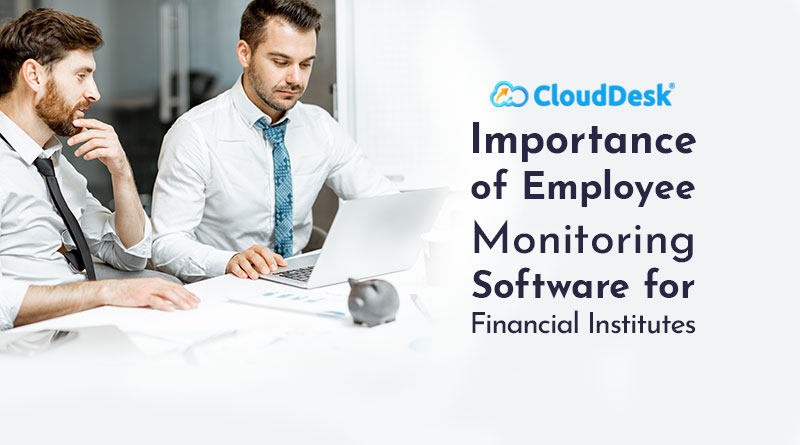The software for monitoring employees is a software that companies to track and monitor employees’ activities. It allows employers collect data on employee activities including Internet usage applications, keystrokes, usage of the Internet or even screen shots. The principal goal of the software to monitor employees' activities is to improve productivity, ensure compliance with company policies, safeguard sensitive data, and resolve security concerns. When choosing an employee tracking software, there are a lot of factors to think about. Consider these important points such as features. Choose the features you require in line with the needs of your company. The most common features are blocking websites, keystroke logs, application usage tracking and email monitoring. Prioritize the features that align with your monitoring goals.
Compliance and Privacy- Ensure that the software is compliant with the ethical and legal guidelines for monitoring employees. You should be aware with all applicable laws and regulations, including privacy and data protection laws. Consider software that offers flexible and transparent options to safeguard employee privacy.
Be sure to consider the software's usability and accessibility. Simple installation and a simple interface can simplify the process and will save you time. Look into customizable dashboards that include simple reporting tools that will assist you with navigation and interpret data.
Integration and Compatibility - Be sure that the software you choose to use is compatible with the current IT infrastructure and any systems you are using, such as email clients, collaboration platforms, project management tools and operating systems. Compatible software ensures continuous monitoring, and doesn't disrupt day-today work.
Data Security- Examine the software's security measures to protect the data collected. Secure data storage, encryption, access controls, and compliance with industry-standard security protocols are crucial. Check that the software company uses secure practices that are robust and have an excellent track record in protecting data.
Scalability- You should consider the software's ability to scale up to meet the growth of your organization. If you expect to grow your workforce or expand locations in the future, choose a software solution that can easily be scaled up to meet evolving needs.
Analytics and Reporting - Take a look at the features of the software that allow reporting. Take into consideration features that will provide a thorough insight into the performance of employees, their time allocation and trends. Customized reporting and analytics can assist you in making better decisions and identify potential areas of improvement.
Customer Support: Evaluate the quality of support provided by the software company. Examine their responsiveness, accessibility and the amount of technical assistance they provide. A good customer service will provide prompt assistance when issues arise.
Cost- Pay attention to the pricing model for the program. It could be a one-time fee that is subscription-based, or usage based. Knowing the pricing structure is crucial, as it includes additional costs for updates, support or other features. You should balance your budget as well as the worth of features against the amount you are able to afford.
Employee Communication and Transparency- Establish clear communications with your employees regarding the introduction of monitoring software. Define the scope and function of the monitoring in a transparent manner. Tell them how they can be protected, and also address the concerns of your clients.
These aspects will allow you to make an informed decision about the software for employee monitoring that you choose. See the recommended time tracking monitoring services for website recommendations.

What Are The Strengths And Distinctions Of Software To Track Employees?
The software for monitoring employees comes with many options for analyzing and tracking the activities of employees. Different software applications may have distinct features, however they are generally the most used. It provides a complete description of the activities employees engage in while at work.
Keystroke Logging Keystroke logs track every single keystroke that employees make. It can identify productivity bottlenecks and also identify unauthorized actions and collect evidence to aid investigations.
Screenshots and Screen Recordings Certain software programs capture screen captures or record screens of employees at regular intervals. This feature can be used to monitor productivity, confirm compliance, or to troubleshoot problems.
Internet Usage Tracking: This feature is used to track employee Internet activity such as sites visited, search downloads and queries. This feature assists in identifying excessive browsing that is not related to work, potential security threats, and policies that are not being followed.
This feature lets you monitor the apps employees use while at work. It helps to identify unapproved and excessive use of apps by providing insight into the applications that are used most often.
Email Monitoring - This feature gives employers the capability to check employee email messages, including those messages that are received and sent, attachments and email content. Employers can verify compliance with their policies to prevent data leaks, and to investigate suspicious activities.
Tracking of Documents and Files This feature monitors file changes and access. It protects sensitive information by monitoring document collaboration and monitoring compliance with data protection policies.
Remote Monitoring - Employers are able to track employees working remotely or from different places. Employers can track their work and monitor productivity irrespective of their location.
Productivity AnalysisSoftware for monitoring employees typically includes features for productivity analysis that provide insights into work patterns of employees along with time allocation and overall productivity levels. These analyses permit the analysis of areas that can be improved and help optimize workflow.
Reporting, Analytics and Visualizations- The comprehensive reporting and analysis features create precise reports and graphs based on the collected information. These reports provide valuable insights into employee performance and time management, as well as allocation of resources.
Compliance and Policy Management- Some software solutions offer features to ensure compliance with the regulations of the industry and company rules. Employers are able to establish and enforce policies related to acceptable use of computers, internet access, and data security.
Alerts and Notifications Alerts alert managers as well as employers about certain situations. They may alert you to excessive internet use and attempts to access restricted sites or unsettling behavior.
The functionality and availability of features may differ between various options for employee surveillance software. Take into consideration features that can assist you in reaching your goals for monitoring as well as ensuring compliance with legal and ethical standards in your jurisdiction. Follow the recommended time tracking monitoring software for website info.

How Can Employee Surveillance Software Comply With Compliance And Privacy Law?
It is crucial that employee monitoring software conforms to compliance and privacy laws. Employee monitoring software must adhere to specific privacy and compliance laws. While these may vary depending on the state, some of them are generally accepted. Employee monitoring software usually includes tools that allow employers to clearly explain their monitoring policy to employees. This could include providing written notices, seeking consent through consent forms, or creating an employee handbook which outlines monitoring practices.
Transparent Monitoring Policies- Employee monitoring tools promote transparency. They ensure that employees know what kinds of data are being gathered and why, as being aware of the extent of monitoring. Employees can better be aware of their privacy rights and the limitations of monitoring when policies are clear and comprehensive.
Data minimization is usually implemented by employee monitoring software to ensure the compliance of privacy laws. The software stores and collects only necessary information, while eliminating unnecessary or overly detailed information. This software helps to reduce the risk of privacy breaches by only collecting data that is needed to monitor.
Some employee surveillance software can anonymize, or aggregate, data to protect employees' privacy. The process of anonymization eliminates personally identifiable information from stored data. It makes it difficult to link data to the specific person. Aggregation uses data from many employees to generate information for a large group without identifying anyone.
Secure Storage of Data and encryption- Employee monitoring software prioritizes the security of data collected. To guard against accidental access, unauthorised access or accidental disclosure, the software employs encryption and secure data storage methods. This includes protecting data while traveling and also in the rest of its life.
Access Controls and Restricted Permissions Software for monitoring employees offers access controls that are granular to guarantee compliance. This allows employers to limit access to monitoring data to those who are authorized to use the data for legitimate purposes like HR employees or administrators designated by the company.
Rights of the Employee Rights- Respecting employee's rights means adhering to compliance and privacy legislation. Software for employee monitoring often comes with features that permit employees to access their monitoring records, ask for corrections, and file complaints. This empowers employees to assert their rights and pursue remedies in the event of privacy breaches.
Conformity with Data Protection Regulations - Employee monitoring software is designed to conform with data protection regulations like the General Data Protection Regulation in the European Union (GDPR) or the California Consumer Privacy Act in the United States (CCPA). It is accomplished by implementing appropriate measures to safeguard personal data, respecting the rights of data subjects, and making sure that the use of data is legal. data.
Note that, while monitoring of employees can help companies meet the requirements of laws and regulations However, they should also consult lawyers and keep up to date on local laws and regulations. Compliance and privacy laws requires a comprehensive approach that goes far beyond the software itself, including clear policies, employee education and monitoring for compliance on a regular basis. Check out the most popular employee monitoring services for site tips.
